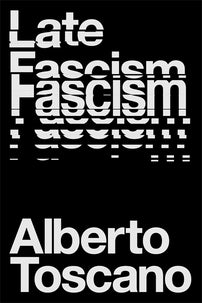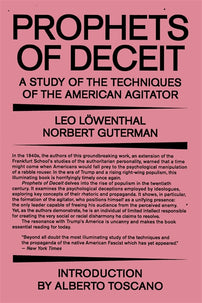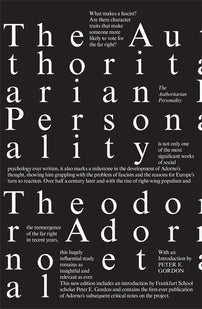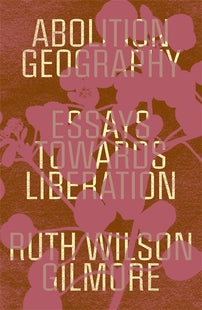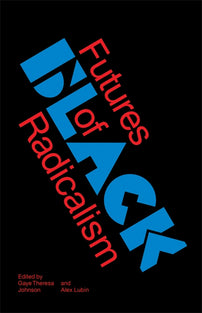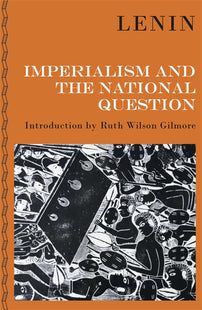Comprehending fascism in our time
Lisa Lowe, thinking with Alberto Toscano’s Late Fascism, on Black radical and anticolonial theories of fascism.

The below is a lightly edited version of a presentation given at a book launch for Late Fascism in February of 2024.
In our contemporary moment, bombs relentlessly decimate schools, hospitals, and water supplies, driving people from their homes. Austerity measures deepen punishing global economic divides, as authoritarian governments subject the most vulnerable poor and unhoused to state violence and imprisonment. It is a time, in Antonio Gramsci’s words written in a fascist prison a century ago, in which the “old world is dying and the new cannot be born,” in which the failures of an old political economic order, and the “morbid symptoms” of imperial nation-states beset by legitimation crises, coexist with emergent alternatives struggling to be born. Across the world, crowds take to the streets to call for a ceasefire in Gaza, to protest police murders of unarmed Black men and women in North America, to demand housing for migrants and defunding of prisons, and to protect waterways and lands from extraction and the building of pipelines. The ensuing chaos of the dying regime brings its own atrocities and new forms of terror, but it also makes possible new relations not yet realized. These collective movements – across various colonial and capitalist histories, regions, populations – comprise differentiated yet linked conditions of promise and peril that come together in this urgent, and episodically incomprehensible historical moment.
I read Alberto Toscano’s erudite, elegantly thought, and patiently argued book, Late Fascism, as aimed in part at giving us the historical and political philosophical means to make comprehensible fascism in our time, by coming to terms with fascism in the longue durée. Since available political languages are so saturated by liberal political claims and logics, they often veil and obstruct understanding of the “political present.” They contribute to the misrecognition of “fascism” as spectacular and exceptional, rather than as integral to the modern marriage of liberal democracy with capitalism. Toscanoʻs Late Fascism emphasizes that this misrecognition is a primary obstacle to effectively understanding, organizing, and struggling against the multiple contradictions of our political present.
[book-strip index="1"]
In discussing the nature and aetiology of late fascism, Toscano moves us beyond the European interwar examples of fascism’s “ideal type” and deconstructs the alleged opposition of fascism and liberal democracy. Emphasizing that fascism is not monolithic or generic, does not possess a singular static model for which we can then identify analogies by checking off an inventory of features, he argues that we must instead approach fascism as a process with multiple origins, locations, and temporalities occurring dynamically in relation to specific conditions. In a sense (though he doesn’t put it this way), Toscano is arguing that “fascism is a structure, not an event,” meaning that it is neither an aberration of European wartime, nor an original state of nature from which its antidote liberal political freedom emerges, but is a persistent feature of the history of settler liberalism and colonial capitalism. Liberal democracy is not fascism’s antidote, but rather its conditions of possibility. Fascist rule may include, but is not exclusively limited to, ultra-national authoritarian states. Within liberal states, it animates economic loss and social abandonment, and weaponizes unaddressed atavistic libidinal energies unleashed by the crises and cruelties of the uneven social order, and turns them against racial, religious, sexual, and gendered others.
Toscano elaborates further that we might understand fascism as the constellation of reactive formations across ideological and state apparatuses aimed at maintaining or buttressing a failing social order. It is not separable from colonialisms, but rather intimately interconnected with both historical and ongoing Indigenous dispossession, captivity and plantation slavery, and counter-revolution; fascisms unfold counter to and in anticipation of insurgent rebellions that challenge or transform the existing property regime, from the peoples, sites, and regions in which occupation and tenuous rule has been established. This is the reason that Toscano draws especially upon Black radical and anticolonial traditions for incisive theories of fascism, not only to make evident that we misrecognize fascism if we limit it to Mussolini’s Italy and Hitler’s Germany, but also to argue that fascism is a formation anchored in racial and colonial capitalism, which predates and endures beyond the European example. Among the book’s many valuable contributions, it is this one I address in the remainder of my comments.
Anticolonial thinkers have been the most incisive analysts of fascisms. In his 1950 Discourse on colonialism, the Martinican Aimé Césaire identified the origins of fascism in the project of colonial subjugation when he stated that Europe could only recognize the shame and brutality of “the humiliation of man” when employed by Nazis against white Eruopeans, which “until then had been reserved exclusively for the Arabs of Algeria, the coolies of India, and the blacks of Africa.”[1] In How Europe Underdeveloped Africa, Guyanese Walter Rodney wrote that “Fascism was a monster born of capitalist parents… the end-product of centuries of capitalist bestiality, exploitation, domination and racism exercised outside of Europe.”[2] Trinidadian George Padmore regarded apartheid South Africa as the classic fascist state, and the African American poet Langston Hughes frequently declared the conditions faced by Blacks in America as “fascist.” In other words, before Nazi violence came to epitomize fascism, Black radical thinkers had been detailing fascisms associated with colonial dispossession and racial slavery.
[book-strip index="2"]
Toscano invokes W.E.B. Du Bois’s Black Reconstruction in America (1935), as a key text in the analysis of the entanglement of fascism and liberal democracy. Du Bois argued that slavery was at the heart of modern liberal capitalism. Slavery’s brutal commodification of human beings not only belied U.S. claims of liberal democracy, but the possibility of slave rebellion held the force to transform the system of violent racial inequality that were the conditions of possibility for liberal political claims to universal freedom. Du Bois declared that slavery was not aberrant to liberal democracy in the United States; it was, and continued to be, systemic and constitutive of U.S. democracy, and to the extension of United States power around the world. Du Bois’ history tells the story of half a million Black workers, who by their mass exodus from the southern slave plantations, seized the opportunity to create a General Strike to stop the plantation system that brought the Confederacy to its knees, and moreover compelled the North to take on the abolition of slavery as its issue. But Black Reconstruction ultimately recounts what Du Bois calls a “counter-revolution of property,” the thwarting of Black freedom by the consolidation of a white alliance of northern industrialists and southern oligarchy, and the persuasion of white peasant workers away from a cross-racial alliance with black workers. The “counter-revolution of property” precisely exemplified a fascist formation that shored up white capital and white supremacy against a potential “insurgency” that held the power to end slavery and racial apartheid, and that could have transformed a social order built upon accumulation through the subjugation of captive human beings.
Toscano focuses especially upon what Cedric Robinson called a “Black construction of fascism” as underrecognized theorists of American fascism before the acknowledgement of fascism as such – from the Black Panthers in the late 1960s and early 1970s, to the prison writings and correspondence of political prisoners Angela Davis and George Jackson – urging the rethinking of the theoretical debate over fascism in relation to the situation of imprisoned Black Americans under racial capitalism. As political prisoners, Davis and Jackson understood fascism as a form of preventive counter-revolution, using carceral-judicial structures to suppress perceived threats to the capitalist social order structured in white dominance. In other words, fascisms are indices of racial capitalist crises and imperial overreach, parasitic upon both weaknesses in the political economic order and the vulnerability of opposition to it. Toscano comments that fascism is “reactive, not just in social content but in temporal form – whether responding immediately to a potentially triumphant revolutionary upsurge or, in a mediated way, to an already defeated or ebbing challenge.”[3]
Understanding that capitalism is inherently unstable, we can observe that it comes into crisis when the contradiction between accumulation and exploitation reaches a level that is unsustainable, expressed as overproduction, diminishing profits, and unemployment, on the one hand, and widening wealth gaps, racial segregation, policing of poor communities of color, on the other. In the United States, these contradictions dialectically produced antagonisms throughout the 1970s that erupted in radical Black, Brown, Yellow and Red Power movements, labor strikes, urban rebellions, and social movements, from women of color feminist to anti-apartheid and antiwar, to which the state responded with the buildup of military, police, and prison capacity of the state. Ruth Wilson Gilmore has taught us much about how these contradictions led to U.S. prison expansion in the 1980s; to justify itself and its monopoly on force, the state worked ideologically to compel identification with multicultural citizenship in the nation, and it punished those “threats” to the national security of that citizenry by distinguishing between “legitimate” use of force by police and military, and the “illegitimate” violence of dissent and rebellion. Although expansion of the state’s repressive functions has multiplied the spaces in which communities are made vulnerable to state violence, such violence is not restricted to incarceration, militarization, or policing alone. Poor racialized, immigrant, and formerly colonized communities have been devastated by neoliberal privatization, deregulation, and extractivism that protects corporations and undermines labor and Indigenous protection of the environment; by suburbanization and the targeted surveillance of urban social spaces; and by the moral panics surrounding “urban crime,” immigrants, Black women, women of color, and queer of color communities – these, too, are operations related to and implicated in the expansion of the U.S. carceral state.
[book-strip index="3"]
Angela Davis and George Jackson, in their prison writing and correspondence, discuss the prison buildup by the U.S. state as an exemplary form of fascism, combining monopoly capitalism, imperialism, and capitalist crises with the counter-insurgent suppression of political dissent. In Late Fascism, Toscano discusses one of Jackson’s prison letters from Blood in My Eye (1972). Jackson wrote:
When I am being interviewed by a member of the old guard and point to the concrete and steel, the tiny electronic listening device concealed in the vent, the phalanx of goons peeping in at us, his barely functional plastic tape-recorder that cost him a week’s labor, and point out that these are all manifestations of fascism, he will invariably attempt to refute me by defining fascism simply as an economic geo-political affair where only one party is allowed to exist aboveground and no opposition political activity is allowed.[4]
Jackson identifies the prison as an apparatus of fascism from the perspective of a Black political prisoner accused of armed revolutionary activity, and imminently murdered by prison guards. As a Black political prisoner, framed as insurgent “threat” to the state’s monopoly on force, Jackson writes transparently about fascism’s counter-revolutionary formation, and emphasizes the materiality of the prison-industrial complex, from the surveillance technologies to the devalued labor of prison personnel. Jackson is commenting on fascism as what Gilmore would later call a “restructuring of the capitalist state” as if fails forward. Gilmore emphasizes that the U.S. postwar racial state’s “prison fix” to capitalism’s failure is not an isolated phenomenon, but that the decisions to build prisons that disproportionately cage Black men and women – and investments in industrial punishment, policing, and military rather than in public welfare, healthcare, or schools – have been central to a structural reorganization of the postwar “landscape of accumulation and dispossession.” As Toscano observes, fascism is not only a counter-revolutionary restructuring of the capitalist state, it is also an incipient, anticipatory one, against a deferred, suppressed, or ongoing reckoning with an abolition struggle that has been ongoing since before Reconstruction.
[book-strip index="4"]
Alberto Toscano is one of the most significant and original political theorists of our contemporary moment. In Late Fascism, he engages an illuminating range of anti-fascist thought: from Ernst Bloch, George Bataille, and Leo Lowenthal to Angela Davis and George Jackson; from Stuart Hall and Ruth Wilson Gilmore to Jairus Banerji and Furio Jesi – with dazzling results. Rendering fascism not a monolith, but a range of responses to colonial and racial capitalist crisis, serves to dislodge fascism from the deadlock of analogy, providing the resources to effectively understand our historical present. Moreover, Toscano excavation of fascism’s longue durée insists on the coloniality of the present, in Cedric Robinson’s words, it “resurrects events which have systematically been made to vanish from our intellectual consciousness,”[5] and permit us to understand our present conditions anew.
[1] Discourse on Colonialism, Monthly Review Press, 1955/1972.
[2] Walter Rodney, How Europe Underdeveloped Africa, Verso Books, 1972/2018.
[3] Toscano, p34.
[4] George Jackson, Blood in My Eye, cited in Toscano.
[5] Cedric Robinson, An Anthropology of Marxism, Ashgate, 2001.

